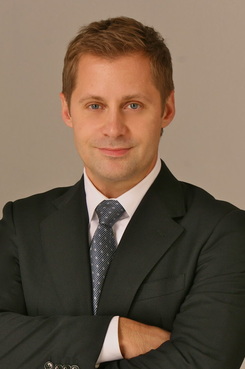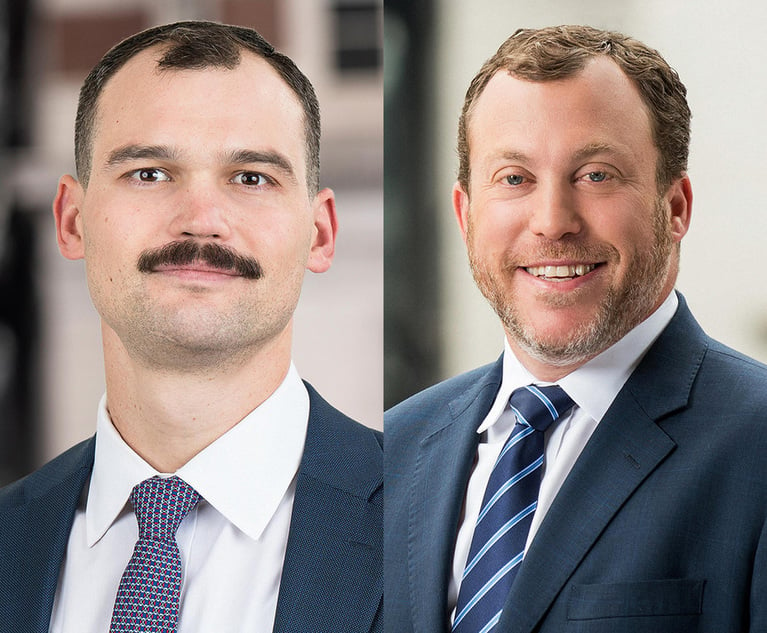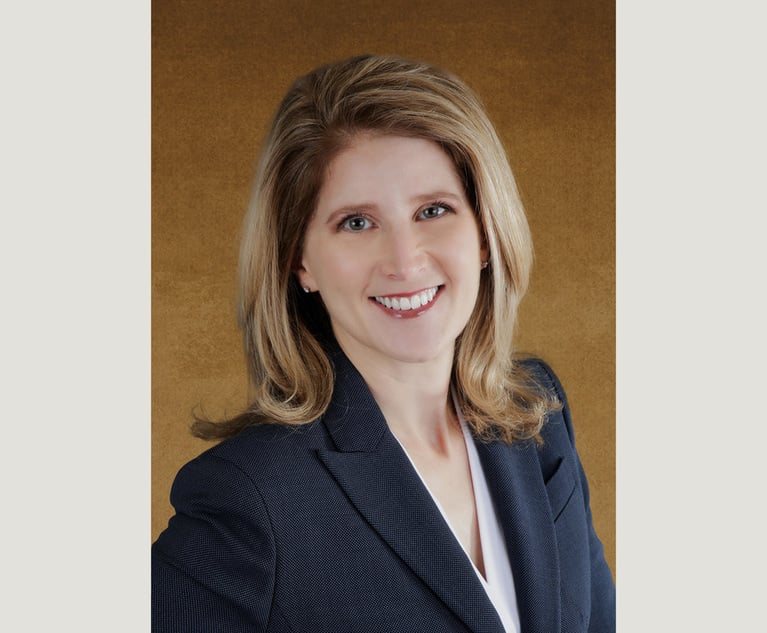Future of Lateral Moves: Practice Area, Geography and Economics Remain Important
Taking a look at emerging trends in lateral moves, can we predict for the near future that firms will more likely grow through larger groups or through individual hires? Well, as my accounting professor liked to say: It depends.
March 20, 2018 at 02:53 PM
6 minute read

Taking a look at emerging trends in lateral moves, can we predict for the near future that firms will more likely grow through larger groups or through individual hires? Well, as my accounting professor liked to say: It depends.
For many years, law firms seeking to grow focused more on how they could quickly and efficiently add to their revenues, and less on the specific capabilities they would like to expand on or the potential risks of a certain acquisition. In today's business climate of tighter post-recession budgets for corporate clients, fierce competition among law firms, and risk-wary management teams, lateral moves are much more deliberately considered, particularly when it comes to individual partner moves versus group acquisitions.
Large, national/international firms have centered their growth plans around group acquisitions and mergers to bolster specific practice areas or client offerings. Indeed, there will always be the exception of an individual or small group with an unparalleled reputation, specific expertise or unique leadership experience. A clear example of this is Blank Rome, where former Assistant U.S. Attorney Mark Lee joined last summer, bringing with him extensive experience in white-collar defense and investigations. In another instance, a pair of partners, Rachael Bushey and Jennifer Porter, returned to Pepper Hamilton—two highly regarded life and health sciences attorneys who were a low-risk, known entity re-joining the firm. Finally, Reed Smith welcomed Michael Peterson earlier this year, instantly filling a need the firm saw to strengthen its cross-border private equity practice. Such examples notwithstanding, one-offs (or two-offs) have become somewhat less common.
Midsize and larger middle-market firms tend to implement a mixed expansion strategy, again depending on capability gaps and a partner's portable business. For smaller firms, the addition of one or two attorneys is a more appropriate match to organic growth and firm economics at this scale. Individual partners who don't require a large platform, at the same time, are often drawn to the more flexible rates and less rigid cultures of these smaller environments. The addition of Joseph Hayes to Flaster Greenberg last summer demonstrates this type of move typically seen among smaller regional firms hiring an individual to join established practice groups.
When acquiring a small firm or group, there is a certain level of security in knowing that these attorneys are used to working together, and typically bring their own support staff and, most importantly, their own clients and accounts receivable. They are effectively their own business entity. This predictability is a key advantage in strategic expansion, one that even the most promising up-and-comer most likely is lacking. How will the new person blend in work-wise and culturally at the firm? Will they be able to bring in business? How long will it take for them to get up to speed and start delivering results? These concerns are minimized when acquiring or merging on a larger scale, as in the case of Ballard Spahr, which merged with a smaller regional firm, Lindquist & Vennum, earlier this year. In doing so, Ballard achieved its goals of expanding its footprint into the Midwest and adding depth to its M&A capabilities through a low-risk acquisition.
The Ballard example also brings up the geography factor, which also plays into a firm's business objectives and thus its growth. Large and midsized firms will seek small firm and large group acquisition opportunities to expand their reach based on client needs. In some cases, the fastest way to put a stake in new ground may be to even add just one or two attorneys already practicing in that area. In established markets, firms are more likely to seek out a group. Large firms will continue to acquire small and midsized groups in known, established markets to enhance their expertise and build on their already strong brand. We saw this strategy in action when Cozen O'Connor brought on a large group from Buchanan Ingersoll & Rooney to bolster the firm's labor and employment practice. While Cozen was already clearly established in both the region and the practice area, this move enabled the firm to enhance its depth and capacity.
Large-scale mergers will certainly continue in instances where the benefits and rewards are clear and mutual, again as Ballard demonstrated. In the case of Saul Ewing's merger with Arnstein & Lehr last year, the firm took advantage of the opportunity to expand its capabilities, talent and geography by joining together with a firm of a slightly smaller size. Through this consolidation, the two firms unified their clients, staff, and office space, and collaborated to be able to now offer greater capabilities in key practice areas.
As mentioned earlier, the recession left a permanent imprint on how law firms decide to expand (or not) through lateral growth. Gone are the days of corporate clients simply signing off on bills from the law firm they have always used. The current climate means greater rate scrutiny and increased competition among firms looking to earn a piece of a company's tightened budget. As firms are asked to do more for less, there is less room for error in the lateral hiring process. More effort is now put into due diligence when considering a lateral acquisition, with the assurance that comes from a group often emerging as the safest route.
It will also be important for hiring firms to recognize the need to position themselves attractively to a prospective group or small firm. Management needs to define and articulate what differentiates the firm and what particular expertise or need it is looking to fill to best ensure the growth decision is a smart one that drives business objectives and revenue. Whether the firm strategy is to be broad in service or to become more specialized, a more thorough approach will help limit risk and concern.
Lateral movement is a critical part of a law firm's growth and vitality, and can set the path for an attorney's career, whether as an individual or part of a group. Recent trends suggest that management is becoming ever-more deliberate and risk-averse when considering lateral opportunities. As we move through 2018 and beyond, we will continue to see how factors such as practice area focus, geography and economics impact law firm growth.
Steven Kruza has over 15 years of legal recruiting experience. He joined Kruza Legal Search in 2001 and launched the firm's attorney search division. He has broad experience advising clients and placing lawyers with law firms and corporations throughout the Northeast corridor. Kruza holds a degree from the Wharton School of Business at the University of Pennsylvania.
This content has been archived. It is available through our partners, LexisNexis® and Bloomberg Law.
To view this content, please continue to their sites.
Not a Lexis Subscriber?
Subscribe Now
Not a Bloomberg Law Subscriber?
Subscribe Now
NOT FOR REPRINT
© 2025 ALM Global, LLC, All Rights Reserved. Request academic re-use from www.copyright.com. All other uses, submit a request to [email protected]. For more information visit Asset & Logo Licensing.
You Might Like
View All
Pa. Supreme Court to Decide Enforceability of 'Browsewrap' Arbitration Agreements
8 minute read
From a Mediator’s Perspective: Common Mis-steps That Parties Make at Mediation
6 minute readTrending Stories
- 1States Accuse Trump of Thwarting Court's Funding Restoration Order
- 2Microsoft Becomes Latest Tech Company to Face Claims of Stealing Marketing Commissions From Influencers
- 3Coral Gables Attorney Busted for Stalking Lawyer
- 4Trump's DOJ Delays Releasing Jan. 6 FBI Agents List Under Consent Order
- 5Securities Report Says That 2024 Settlements Passed a Total of $5.2B
Who Got The Work
J. Brugh Lower of Gibbons has entered an appearance for industrial equipment supplier Devco Corporation in a pending trademark infringement lawsuit. The suit, accusing the defendant of selling knock-off Graco products, was filed Dec. 18 in New Jersey District Court by Rivkin Radler on behalf of Graco Inc. and Graco Minnesota. The case, assigned to U.S. District Judge Zahid N. Quraishi, is 3:24-cv-11294, Graco Inc. et al v. Devco Corporation.
Who Got The Work
Rebecca Maller-Stein and Kent A. Yalowitz of Arnold & Porter Kaye Scholer have entered their appearances for Hanaco Venture Capital and its executives, Lior Prosor and David Frankel, in a pending securities lawsuit. The action, filed on Dec. 24 in New York Southern District Court by Zell, Aron & Co. on behalf of Goldeneye Advisors, accuses the defendants of negligently and fraudulently managing the plaintiff's $1 million investment. The case, assigned to U.S. District Judge Vernon S. Broderick, is 1:24-cv-09918, Goldeneye Advisors, LLC v. Hanaco Venture Capital, Ltd. et al.
Who Got The Work
Attorneys from A&O Shearman has stepped in as defense counsel for Toronto-Dominion Bank and other defendants in a pending securities class action. The suit, filed Dec. 11 in New York Southern District Court by Bleichmar Fonti & Auld, accuses the defendants of concealing the bank's 'pervasive' deficiencies in regards to its compliance with the Bank Secrecy Act and the quality of its anti-money laundering controls. The case, assigned to U.S. District Judge Arun Subramanian, is 1:24-cv-09445, Gonzalez v. The Toronto-Dominion Bank et al.
Who Got The Work
Crown Castle International, a Pennsylvania company providing shared communications infrastructure, has turned to Luke D. Wolf of Gordon Rees Scully Mansukhani to fend off a pending breach-of-contract lawsuit. The court action, filed Nov. 25 in Michigan Eastern District Court by Hooper Hathaway PC on behalf of The Town Residences LLC, accuses Crown Castle of failing to transfer approximately $30,000 in utility payments from T-Mobile in breach of a roof-top lease and assignment agreement. The case, assigned to U.S. District Judge Susan K. Declercq, is 2:24-cv-13131, The Town Residences LLC v. T-Mobile US, Inc. et al.
Who Got The Work
Wilfred P. Coronato and Daniel M. Schwartz of McCarter & English have stepped in as defense counsel to Electrolux Home Products Inc. in a pending product liability lawsuit. The court action, filed Nov. 26 in New York Eastern District Court by Poulos Lopiccolo PC and Nagel Rice LLP on behalf of David Stern, alleges that the defendant's refrigerators’ drawers and shelving repeatedly break and fall apart within months after purchase. The case, assigned to U.S. District Judge Joan M. Azrack, is 2:24-cv-08204, Stern v. Electrolux Home Products, Inc.
Featured Firms
Law Offices of Gary Martin Hays & Associates, P.C.
(470) 294-1674
Law Offices of Mark E. Salomone
(857) 444-6468
Smith & Hassler
(713) 739-1250







